
Dec 17, 2021 | Company News
Solar street lamp has been widely used because of its good energy-saving advantages. There are three kinds of solar batteries, which are important components of solar street lamps. They are lithium battery, lead-acid battery and colloidal battery. Among them, lithium battery is becoming more and more popular in the solar energy industry because of its service life higher than the two.
Advantages of using lithium battery for solar street lamp

Lithium batteries are safer
Lithium batteries are dry batteries. It is an energy storage battery with controllability and no pollution. It is more stable and safer than lead-acid battery.
Reasonable distribution of power consumption level
The solar street lamp lithium battery can also intelligently optimize the remaining capacity of the battery, day and night duration, weather conditions and other factors according to the needs of users, and reasonably allocate the power level. And realize the functions of light control, time control, storage and memory. It can ensure that the lights are on for at least ten consecutive rainy days.
Long life of lithium battery
Unlike the short life of lead-acid batteries that need to be replaced in two or three years, the service life of lithium batteries is generally greater than 10 years. In the solar street lamp system, the service life of LED light source can generally reach 10 years. The selection of lithium battery can perfectly match the system and avoid the cumbersome process of frequent battery replacement.
Small volume, light weight and easy transportation
Compared with the lithium energy storage system and lead-acid colloidal battery used in high-power solar street lamps, the weight is about one-third and the volume is about one-third. In this way, transportation is easier and the transportation cost naturally decreases.
Street lamps are easy to install
During the installation of traditional solar street lamps, a battery pit needs to be reserved, and the battery is put in and sealed with a buried box. The installation of lithium solar street lamps is much more convenient. The lithium battery can be directly installed on the bracket, and the suspension type or built-in type can be used.
Street lamps are easy to maintain
The lithium battery solar street lamp only needs to remove the battery from the lamp pole or battery panel during maintenance. The traditional solar street lamp needs to dig out the buried battery during maintenance. Compared with lithium solar street lamps, it is much more troublesome.
Precautions for the use of solar street lamp lithium battery
Temperature
The service life of anything is actually affected by temperature. This is the so-called working temperature. The working ambient temperature of lithium battery is between – 30 ℃ – 60 ℃. However, generally, the performance will be affected below 0 ℃.
Complete discharge
Due to current technical problems, lithium batteries cannot be completely discharged at will. Generally, less than 10% of the electricity will cause serious damage to the battery. Solar street lamps have controllers. One of the essential functions of this component is overcharge and discharge protection.
Waterproof
Lithium battery itself has very good water resistance. But we should also try to reduce the risk of water inflow. For example, lithium batteries are generally buckled under the solar panel, and there is another protective shell outside.
At present, solar street lamps are developing rapidly. Lithium battery is an energy storage battery with controllability and no pollution. The new lithium battery solar street lamp can perfectly match the system. As the lithium battery technology becomes more and more mature, the capacity is larger and larger, the life is longer and longer, and the application range is wider and wider.

Dec 16, 2021 | Company News
Lithium battery is an energy storage conversion device which to use widely . Because of its excellent electrochemical performance, it realizes the market application scenario of small, medium and large-scale.
When we talk about the correct use of lithium batteries, we usually refer to small applications, that is, consumer electronics, such as smart phones and laptops. Because large and medium-sized applications are based on small application technology, small applications have common characteristics. Large and medium-sized applications are much more complex. Usually, medium-sized applications are used in new energy vehicles, which are generally called power batteries. Large scale applications are usually on base stations, which are generally called energy storage batteries. Therefore, when we talk about the “use method of lithium battery”, it is in line with people’s customary understanding to limit lithium battery to small application fields.
The working principle of lithium battery is nothing more than charging to reserve energy, discharging into other energy and releasing it. It is idle when it is neither charged nor discharged. Therefore, the correct use method of lithium battery: correct charging, correct discharge and correct maintenance.

Correct charging method of lithium battery
Grasp the time to prevent overcharge
Do the right thing at the right time. Although lithium battery itself has excellent electrochemical performance, any thing that deviates from the equilibrium state will have potential safety hazards.
Timely charging
In the early stage of the emergence of smart phones, each mobile phone manufacturer, out of the original intention of protecting their own interests, often emphasized the use of original chargers to charge electric equipment. Some manufacturers designed special data lines and did not support other chargers. Later, with the increasing application of smart phones and laptops, it is obviously self binding to continue like this, so now we have basically unified the standard, and a charger / line can charge electric appliances of different brands and properties. Charging is convenient. One problem that users should pay attention to is to keep the battery with normal power at any time. Under normal circumstances, when the power is too low, the mobile phone and laptop will have a reminder. At this time, you need to replenish the power in time. Although low power will not lead to direct safety accidents, excessive use will damage the battery structure over time.
Fill it up
The lithium battery cell is also composed of many components. The new battery is OK. If it is used for a long time, maybe the function of any component will decline, so there will be overcharge safety risk. Several typical accidents exposed by Samsung and apple were caused by the owner of the electric appliance putting his mobile phone at the head of the bed to charge while sleeping, which finally led to combustion and explosion.
Never use two things at once
While charging and using the mobile phone, especially when playing games, it is very easy to feel that the mobile phone is hot. The reason is also very simple. The mobile phone is equal to working two jobs at the same time, which makes it have to pay more than twice the labor force, and the body will naturally get hot.
Correct discharge method of lithium battery
Charge in time to prevent over discharge.
Ordinary mobile phone users are not aware of the harm of over discharge, because there are usually no reports of safety accidents. Moreover, some people even think that regular deep discharge is good for the maintenance of battery performance. In fact, it is not because the memory effect of lithium battery is negligible, and there is no saying that deep discharge eliminates the memory effect. Theoretically, the total cycle life of lithium battery with deep discharge will be greater. However, the risk is that excessive battery discharge will lead to low battery voltage and failure to charge normally. Sometimes it takes a long time to start the machine, and it can’t even start the machine. The lesser of the two evils, the shorter service life is better than not being used. Therefore, the majority of mobile phone and laptop users are advised not to often use the black screen.
Correct maintenance of lithium battery
The temperature is suitable to prevent cold and heat.
When idle, lithium batteries usually do not have safety accidents. The purpose of daily maintenance is to put the lithium battery in a suitable environment, so as to delay the aging of the battery. In fact, one of the parameters of lithium battery design is the appropriate temperature. Relatively speaking, it is not a problem if the temperature is low, but if it is placed at a higher temperature, as the saying goes, when things reach the extreme, they will turn against each other, which will also produce safety problems. We are talking about the idle state only in terms of the normal environment. If the lithium battery is placed in water or close to the fire source, it will be out of the topic of “maintenance”. The water is moisture-proof and the heat is sun proof. Therefore, the suitable environment for daily maintenance of lithium battery should be four words: ventilation and shade. These four words shall be followed whether the lithium battery is idle independently or ready for use in electrical appliances.
In the correct use of lithium battery, lithium battery charging method is the most important. Because incorrect charging method will cause safety problems, and discharge and daily maintenance only affect the service life of lithium battery. Lithium battery itself is also a consumable. No matter what measures we take, we can’t avoid its final loss, but we use the correct method to delay its aging.
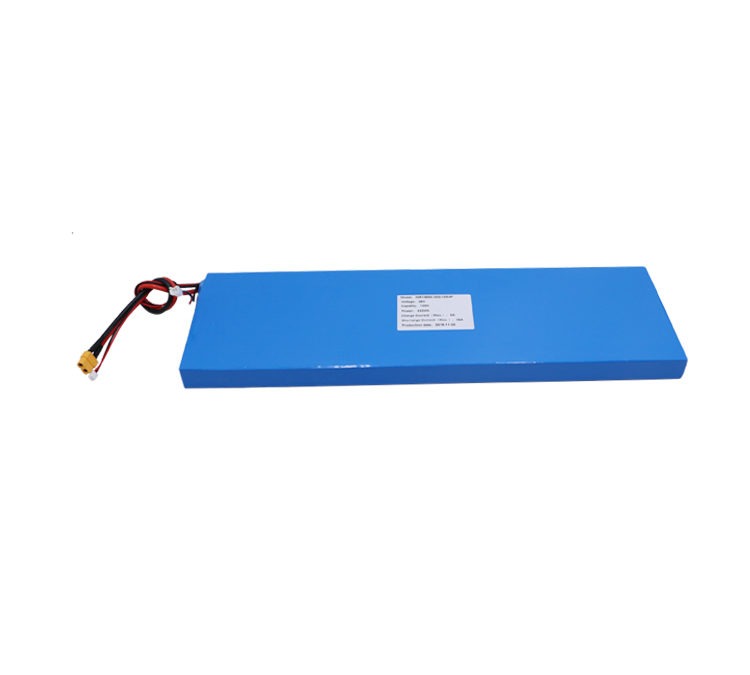
Dec 15, 2021 | Company News
Introduction of lithium ion battery in robot industry
In recent years, for lithium battery manufacturers, “machine substitution” seems to be more urgent. The explosive development of new energy vehicles has driven the new development of lithium battery industry, and the demand for lithium batteries is also increasing. However, behind the vigorous development of lithium battery equipment industry, there are still low efficiency, poor stability and low degree of automation.
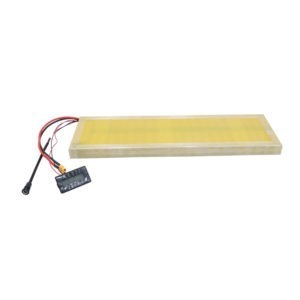
Drive the technological upgrading and transformation of lithium battery manufacturers
Combined with lithium battery production technology, the automation and intelligence of lithium battery production line can be greatly improved. Improve production efficiency and product quality. Drive the technological upgrading and transformation of lithium battery manufacturers. At the same time, it integrates with artificial intelligence technology, automation, information and other intelligent manufacturing technologies. It is not only the premise of realizing chemical unmanned factory, but also the development trend of discrete production lines such as lithium batteries in China in the future.
Fabrication and assembly
In recent years, the demand for robots in the lithium battery industry has increased, while new energy vehicles will continue to maintain rapid growth in the next few years, and the demand for lithium batteries is still strong. The lithium battery manufacturing process includes coating, slitting, baking, winding, assembly, welding, liquid injection, formation, volume separation, pack assembly, etc. In fact, robots can be used in every link of the lithium battery production line, including the connection between single processes and processes.
Improve the automation and intelligence of lithium battery production line
By combining robot technology with lithium battery production technology, the automation and intelligence of lithium battery production line can be greatly improved. Improve production efficiency and product quality, and drive lithium battery manufacturers to carry out technological upgrading and transformation. At the same time, it is integrated with intelligent manufacturing technologies such as artificial intelligence technology, automation and informatization. It is not only the premise of realizing unmanned chemical plant, but also the future development trend of discrete manufacturing production lines such as lithium battery in China.
Unmanned chemical plant
The lithium battery equipment industry is about to usher in a robot revolution. This includes the use of robots to replace labor for equipment and process connection, the use of robots for key equipment, the improvement of production flexibility and the informatization of production line based on factory fieldbus. In the future, intelligent manufacturing technologies such as robot, artificial intelligence, informatization and automation will be fully integrated with each other. Form industrial extension and integration, form scale effect, and strengthen the ability to resist market competition risks. This is not only the premise of realizing unmanned chemical plant, but also the development trend of discrete manufacturing lines such as lithium battery in the future.
Advantages of lithium ion battery
Large capacity and high working voltage
The battery capacity is twice that of the equivalent nickel cadmium battery, which is more suitable for long-term communication. The voltage of traditional lithium-ion battery is 3.7V, which is three times that of nickel cadmium battery and nickel hydrogen battery.
Strong charge retention capability, allowing a wide operating temperature range
Lithium ion battery has good high-temperature and low-temperature discharge performance, which is higher than other kinds of cells.
Long cycle life
Lithium ion battery adopts carbon anode. In the process of charge and discharge, dendritic lithium will not appear in the carbon anode, so as to prevent the damage of internal dendritic lithium short circuit to the battery. After 1200 times of continuous charge and discharge, the battery capacity is still not less than 60% of the rated value, which is much higher than other types of batteries, and has the economy of long-term use.
High safety, safe and fast charge and discharge
Compared with the metal lithium-ion battery, the short-circuit resistance of the lithium-ion battery, because its carbon anode has a special electrode to replace the metal lithium electrode, which allows rapid charging and discharging, and can greatly improve the safety performance when the 1C rechargeable battery is charged and discharged.
No environmental pollution.
The battery does not contain harmful substances such as cadmium, lead and mercury. It is a clean source of green chemical energy.
No memory effect
It can be reused at any time, especially in wartime and emergency situations.
Small size, light weight and high energy
Generally speaking, the specific energy of lithium-ion battery is more than twice that of nickel cadmium battery. It is conducive to small and lightweight portable electronic devices.
Application of robot in lithium battery industry
High assembly efficiency
Robot assembly 8 sets / min, a robot can complete a variety of processes at the same time, and the loading and unloading time of each process is 6 seconds.
The working environment requirements are not high
The robot has no high requirements for the working environment and is not easy to affect the health of operators.
Efficient
The consistency of assembled products is good, and the yield is more than 95%.
High utilization
The robot has high versatility, high flexibility and high reuse rate. It can be used as an alternative to complex mechanisms and manpower.
Even though the application rate of robots in the lithium battery industry is low, there is a large market space, and robot manufacturers and lithium battery equipment manufacturers are looking for the interface of integration. With the development of unmanned and visualization, the demand for robots will increase with the connection of lithium battery equipment production process.
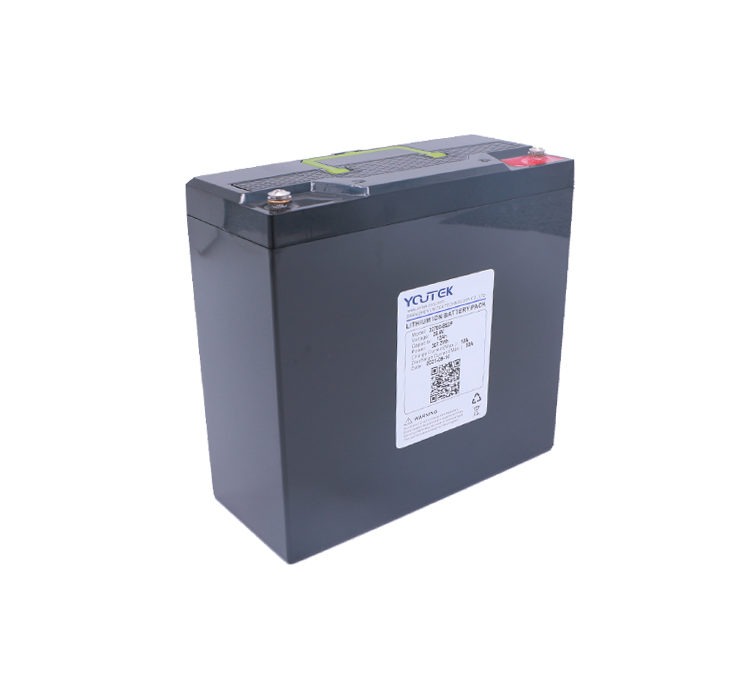
Dec 14, 2021 | Company News
AGV is usually powered by 24V or 48V DC industrial battery. The battery power supply shall reach the rated ampere hour value and generally meet the working needs of more than 8h. For the two shift working environment, the power supply capacity to require to great 17h. The battery can charge by random charging and full cycle charging. The random charging adopts vehicle maintenance free battery, which can to charge arbitrarily. In addition, at the standby parking station of AGV, it can charge at any time without time limit. Full cycle charging requires AGV to exit service and enter the specified charging area, and can only charge when the battery power drops to the specified range. This battery generally realizes the specifications of 4 hours of continuous charging and 2 hours of cooling. Some AGVs use a combination of the above two charging methods. There are three charging operations: automatic, manual and quick change. At present, nickel cadmium batteries, nickel hydrogen batteries, lithium batteries and lead-acid batteries to use for AGV.
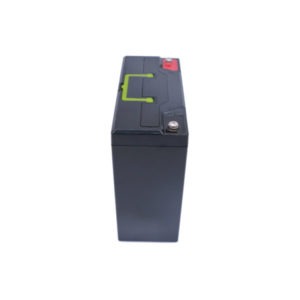
Types of AGV common batteries
Nickel cadmium battery
Small internal resistance, can use for high current discharge, and the voltage change is small during discharge. Compared with other types of batteries, nickel cadmium batteries can withstand overcharge or over discharge. The operation is simple and convenient. The discharge voltage changes with the discharge current, generally 1 ~ 2V. In addition, the discharge termination voltage of nickel cadmium battery is 1oV / monomer, and the actual working temperature range is – 200c-600c, within which discharge can be carried out. Moreover, the charging and discharging can repeate more than 500 times.
Ni MH battery
The energy of Ni MH battery is twice that of Ni Cd battery. Charging with a dedicated charger can quickly charge in an hour. Moreover, the self discharge characteristic is better than that of nickel cadmium battery. It can maintain for a long time after charging, and can charge and discharge more than 500 times.
Lithium battery
High energy density. High voltage, the average working voltage is 36V, which is three times that of nickel cadmium battery and nickel hydrogen battery. Use flat voltage and high capacity. Moreover, the charging and discharging life is long. After 500 discharges, its capacity shall exceed 70% at least. Therefore, lithium battery has the characteristics of high energy density, high voltage and stable operation.
Lead acid battery
Lead acid battery is the most widely used battery in AGV. It uses spongy lead as the negative electrode and lead dioxide as the positive electrode. We call these two substances active substances. Sulfuric acid aqueous solution was used as electrolyte, and they jointly participated in the electrochemical reaction of the battery. AGV lead-acid battery has the advantages of good reversibility, stable voltage characteristics, long service life, wide application range, rich raw materials and low cost. It is mainly used in transportation, mining, port, national defense, computer, scientific research and other fields of the national economy. It is an indispensable product in social production and management activities and human life.
Common faults of AGV battery pack
Battery explosion
There are common faults in the volume distribution cabinet.
Low battery
The number of attached materials is small. The distance between the two sides of the member is large. Alternatively, lithium ion batteries have less electrolyte. It is also possible that the redox potential of lithium ion battery electrolyte is low. And the porosity of the diaphragm is very small. When the coil core is too thick, it is not charged. The specific capacity of battery positive material is small.
High resistance in rechargeable battery
Short circuit fault occurs before charging the battery. The porosity of diaphragm paper is very small.
Low working voltage of rechargeable battery
The electrolyte of lithium ion battery pack decomposes. The electrolyte of lithium ion battery pack decomposes. There is residue and water in the positive stage. The customer’s PCB circuit board is powered off. The customer did not touch welding and vibration lines as required. Micro short circuit fault. The cathode causes dendrites.
AGV battery pack features
Instead of manual handling
Reduce labor intensity.
Strong composability
The charging car can be easily realized by adding drive control unit.
High degree of automation and intelligence
The driving path of AGV can be flexibly changed according to the requirements of storage location and production process. And the cost of changing the running path is very low compared with the traditional conveyor belt and rigid conveyor line.
Progressiveness
AGV integrates advanced theories and applied technologies in the field of science and technology. Strong guidance ability, high positioning accuracy and good automatic driving performance. In addition, reduce manual and manual operation losses. Reduce personnel, save time and shorten staffing. Access to places inconvenient for personnel, optimize production structure and save manpower, material and financial resources.
Quick action
AGV battery pack is characterized by wheel movement. Compared with crawling or other non wheeled mobile robots, it has the advantages of fast action, high work efficiency, simple structure, strong controllability and good safety. Compared with the stacker, monorail trolley, conveyor belt, conveyor chain, conveyor track and fixed robot commonly used in material transportation, the active area of AGV does not need to lay fixed devices such as track and support frame, and is not limited by site, road and space. Therefore, in the automatic logistics system, it can fully reflect its automation and flexibility, and realize efficient, economic and flexible unmanned production.
AGV intelligent robot has greatly improved the efficiency of these industries with its automation and intelligent technology and management level.

Dec 13, 2021 | Company News
Medical equipment has become an important field of modern medical treatment. Compared with other traditional technologies, lithium batteries have many advantages in the application of portable medical devices. This includes higher energy density, lighter weight, longer cycle life, better battery capacity retention characteristics, and a wider applicable temperature range.
Benefits of using lithium batteries in medical devices
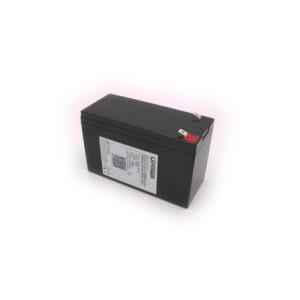
Good safety performance
The structure of lithium battery for medical devices adopts aluminum-plastic flexible packaging. Different from the metal shell of liquid lithium battery. In the case of potential safety hazards, liquid batteries are easy to explode, while medical device batteries can only be inflated at most.
The thickness is small and can be thinner
The thickness of the liquid lithium ion battery is less than 3.6mm. There are technical bottlenecks. However, if the battery thickness of the medical device is less than 1mm, there is no technical bottleneck.
Light weight
The weight of lithium batteries for medical devices is 40% lighter than steel shell lithium batteries of the same capacity and specifications. It is 20% lighter than aluminum shell batteries.
The shape can be customized
For lithium batteries for medical equipment, the thickness and shape of the battery can be increased or decreased according to customer needs. Flexible and fast.
High-capacity
The capacity of medical device batteries is 10-15% higher than that of steel shell batteries of the same size. 5-10% higher than aluminum shell battery.
The internal resistance is very small
Through a special design, the impedance of the lithium battery can be reduced. Greatly improve the current discharge performance of lithium batteries.
Application of lithium battery in medical equipment
Household instruments and mobile monitoring equipment.
Today’s patients may be transferred from the radiology department to the intensive care unit, from the ambulance to the emergency room, or from one hospital to another. Similarly, the popularity of portable home appliances and mobile monitoring equipment allows patients to stay where they like, not necessarily in medical institutions. Portable medical equipment must be completely and truly portable. In order to provide patients with the best service. The demand for smaller and lighter medical equipment has also increased significantly. This has greatly stimulated people’s interest in lithium batteries with higher energy density and smaller sizes.
Emergency vehicle energy storage
The utility model relates to an energy storage lithium battery used for medical equipment of emergency vehicles. It includes a battery body. The battery body is provided with a base, a battery box, a battery cover and a lithium battery pack. The other side of the battery box is provided with a charging port, the outer end of the charging port is provided with a photovoltaic module, and the bottom end of the base is equipped with a bracket. The new structure is simple, reasonable and convenient to use. Lithium batteries have the advantages of small size, convenient carrying, convenient charging, and large energy storage. It can better provide power for medical devices, meet the needs of medical rescue, and protect the lives of patients.
Monitoring instrument, ultrasonic equipment, infusion pump
Nowadays, the application of lithium battery in medical equipment has produced a large number of monitoring instruments, ultrasonic equipment and infusion pumps. They can be used far away from hospitals and even battlefields. Portable devices are becoming more and more convenient to move. Thanks to the application of technologies such as lithium batteries, the 50 pound defibrillator can be replaced by lighter and more compact equipment without causing muscle tension to medical staff. Due to the variety, full function and high precision of medical devices in modern clinical departments, it is very important to ensure the correct and safe use of all kinds of devices. Therefore, effective maintenance of vulnerable parts such as lithium battery in the instrument can not only prolong the service life of lithium battery, but also reduce the maintenance cost of equipment. Significantly improve the utilization rate and intact rate of hospital medical equipment.
With the development of lithium battery technology, the mobile work requirements of portable medical devices have increased. With its absolute advantages of high voltage, high energy and long life, lithium batteries have gradually occupied the leading position in the medical device industry.
Youtek’s goal is to meet the procurement needs of customers and friends at home and abroad, provide high-quality products and let customers meet perfect services. Main products: scooter, smart home, robot, golf charter, GPS positioning and tracking, medical devices, solar energy storage, lamps and other battery products. Focus on battery manufacturing technology, safe and stable, no explosion hazard, strong endurance, long power consumption, high charging conversion rate, non scalding, long service life and durability. It is a battery brand worth choosing.









